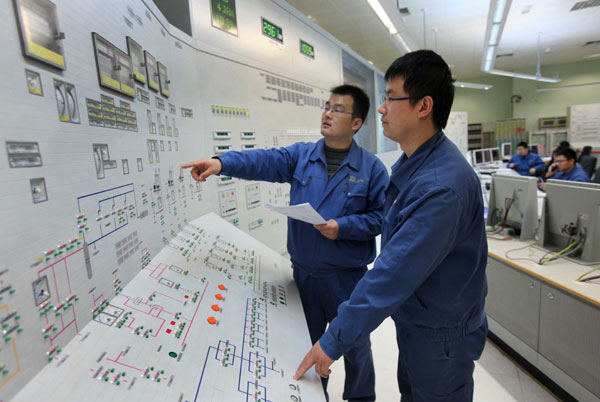Nuclear program will bring more power
Updated: 2012-12-24 07:39
By Jiang Xueqing reports from Shenzhen and Wu Wencong from Beijing (China Daily)
|
||||||||
Comprehensive studies conducted after the disaster in Fukushima will help ensure safety and high standards, Jiang Xueqing reports from Shenzhen and Wu Wencong from Beijing.
The meltdowns at a Japanese nuclear plant last year sent shock waves across the world.
Beijing suspended approval of new nuclear power projects following the massive earthquake and tsunami in March 2011, that triggered a radiation leak at Japan's Fukushima Daiichi nuclear power plant.
But now China's nuclear program is getting back on track.
 |
|
Employees in the control center of Tianwan Nuclear Power Plant in Lianyungang, Jiangsu province. Wang Jianmin / CFP |
The Ministry of Environmental Protection heralded this development in late November with two announcements: The Qinshan Nuclear Power Plant in East China's Zhejiang province will launch a flood-control project, and the Tianwan Nuclear Power Plant in Jiangsu province, also in East China, will build two nuclear power reactor units.
The State Council passed the Nuclear Power Safety Plan (2011-20) and the Mid- and Long-Term Development Plan for Nuclear Power (2011-20) on Oct 24. Eight days earlier, it approved the 12th Five-Year Plan (2011-15) for Nuclear Safety and Radioactive Pollution Prevention and Vision for 2020. These three documents paved the way for the nation to relaunch its nuclear power projects.
Fifteen nuclear power reactors had entered service by the end of 2011, with a total installed capacity of 12.54 million kilowatts. Another 26, still under construction, were designed with a combined installed capacity of 29.24 million kW, the largest in the world. The country's installed nuclear power capacity is expected to reach 40 million kW by 2015, according to China's Energy Policy 2012 published by the Information Office of the State Council on Oct 24.
"It takes about five years to build a nuclear power generating unit," said Pu Jilong, a senior expert in nuclear and radiation safety and former deputy general manager of China Guangdong Nuclear Power Holding Co. "Now that the government has started ratifying new nuclear power projects, if four units are approved each year, the total installed capacity is likely to reach 60 million kW by 2020."

 Relief reaches isolated village
Relief reaches isolated village
 Rainfall poses new threats to quake-hit region
Rainfall poses new threats to quake-hit region
 Funerals begin for Boston bombing victims
Funerals begin for Boston bombing victims
 Quake takeaway from China's Air Force
Quake takeaway from China's Air Force
 Obama celebrates young inventors at science fair
Obama celebrates young inventors at science fair
 Earth Day marked around the world
Earth Day marked around the world
 Volunteer team helping students find sense of normalcy
Volunteer team helping students find sense of normalcy
 Ethnic groups quick to join rescue efforts
Ethnic groups quick to join rescue efforts
Most Viewed
Editor's Picks

|

|

|

|

|

|
Today's Top News
Health new priority for quake zone
Xi meets US top military officer
Japan's boats driven out of Diaoyu
China mulls online shopping legislation
Bird flu death toll rises to 22
Putin appoints new ambassador to China
Japanese ships blocked from Diaoyu Islands
Inspired by Guan, more Chinese pick up golf
US Weekly

|

|






